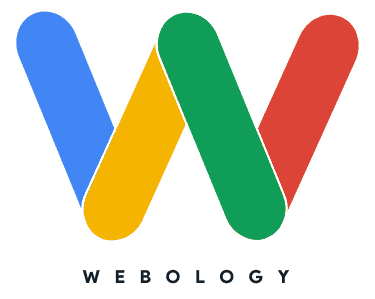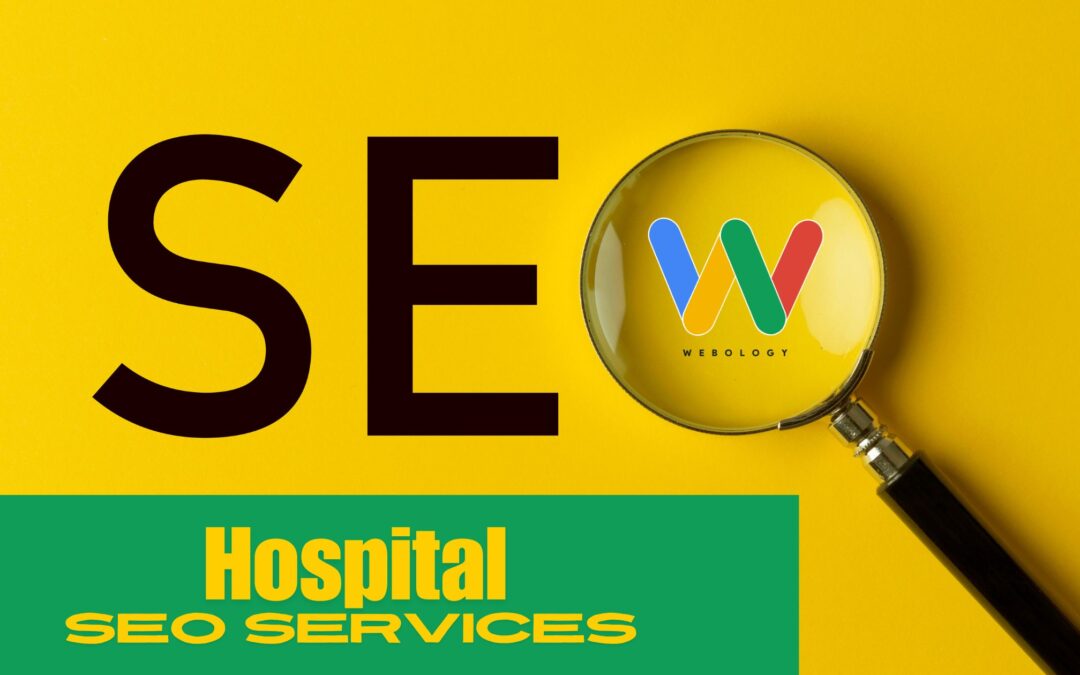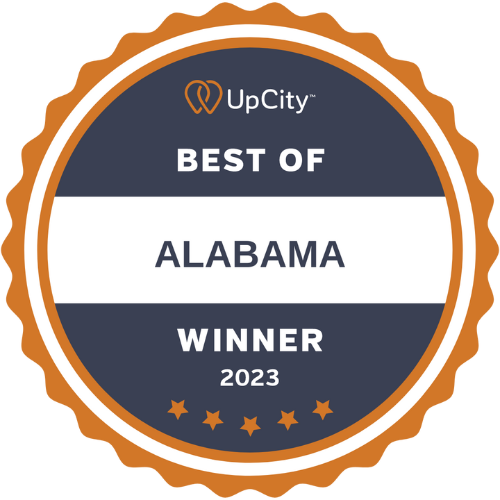Search engine optimization helps you get high-quality leads from search engines like Google. The more leads you generate, the more people you can serve as a healthcare service provider, leading to more revenue and market share.
However, making SEO work for any local business involves a deep understanding of the market and what will work best for your services. If you’re a hospital administrator, this ultimate guide is all you need to help people in your area with your services, all while broadening your market share in the local community.
Digital Marketing Strategies to Increase Hospital Market Share
Here’s a hospital SEO checklist you can copy and follow:
| Checklist Item | Description | Status |
|---|---|---|
| Keyword Research | Identify and focus on local, long-tail keywords relevant to medical services. | Not Started / In Progress / Completed |
| On-Page SEO | Ensure SEO-friendly titles, meta descriptions, and header tags are in place. | Not Started / In Progress / Completed |
| Mobile Optimization | Validate that the clinic’s website is fully responsive and mobile-friendly. | Not Started / In Progress / Completed |
| Local SEO | Optimize clinic’s presence on Google My Business and other local listings. | Not Started / In Progress / Completed |
| Content Strategy | Develop a content plan that addresses common patient queries and medical topics. | Not Started / In Progress / Completed |
| User Experience | Improve website navigation and loading speed for better user engagement. | Not Started / In Progress / Completed |
| Link Building | Acquire quality backlinks from reputable healthcare publications and websites. | Not Started / In Progress / Completed |
| Schema Markup | Implement appropriate structured data to enhance search visibility. | Not Started / In Progress / Completed |
| Reputation Management | Monitor online reviews and engage with patients to maintain a positive online presence. | Not Started / In Progress / Completed |
| Analytics & Monitoring | Use tools like Google Analytics to track SEO performance and make data-driven decisions. | Not Started / In Progress / Completed |
Let’s get into the details of each.
Keyword Research
The first, and one of the most important, steps in SEO is finding search phrases people are typing in Google. The process typically involves using a free or paid keyword research tool, but you can start with the classic Google search.
As you start typing your main keyword, you’ll see several related search queries below the search bar. You’d want to find keywords like “Best 24/7 hospitals near me” or “Best affordable hospitals in [City name]”.
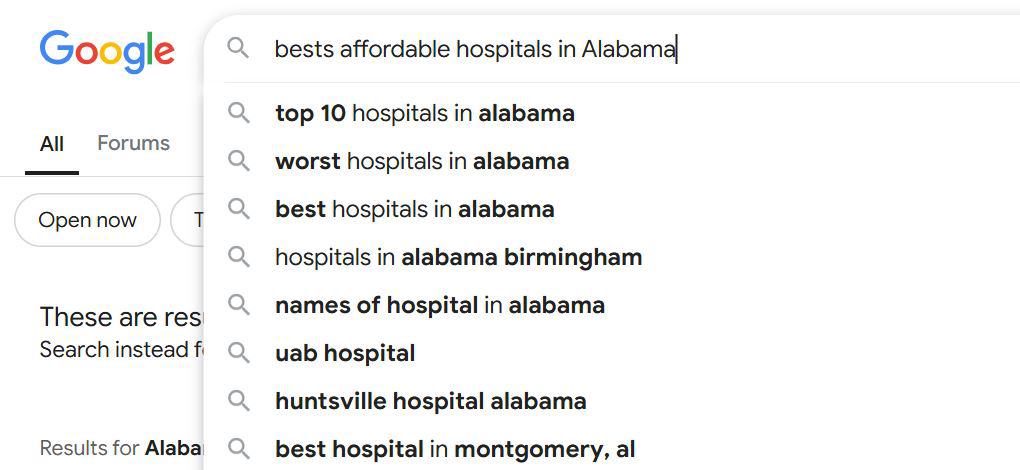
After entering your query, scroll down and you’ll have two more places to find relevant keywords:
- The People Also Ask box
- The Related Searches box
Google search can give you a basic understanding of which keywords you should be looking for. However, for information like monthly search volumes and competition, you’ll need to use a tool like Google Keyword Planner.
For your website’s homepage and service pages, you want to look for local keywords directly related to your expertise. And for blog posts, find search queries around informational topics, such as:
- How to prevent common seasonal illnesses
- The role of nutrition in recovery
- The benefits of regular health checkups

On-Page SEO
As soon as you have a list of keywords to target, it’s time for on-page Optimization.
This is when you help search engines such as Google understand what your content is all about, which in turn helps them rank your content for the right search queries.
On-page SEO or on-site SEO is a step-by-step process that you can follow for every page on your site. It’s a good idea to create a template that you can use for all your pages, but you should also take a look at each page’s top competitors in search and do some customization to mimic what’s working for everyone else.
For example, if 3 of your top 5 competitors in Google have a contact form on their pages, you should consider adding one to yours.
Here’s a list of all important on-page SEO factors to implement on your hospital site:
Title Tags and Meta Descriptions
The titles and meta descriptions of your pages are visible on SERPs (Search engine results pages).

They impact your click-through rates. A higher click-through rate signals that your page is relevant to the search query, which leads to better search engine rankings. And, of course, using your target keyword in the title and meta description can also help Google understand the rest of the page.
Headings (H1, H2, H3, and so on)
Headings form the skeleton of a web page. If you’re on WordPress, the H1 is your page title. In terms of SEO importance, H2 is the most important heading tag after H1. Using subheadings helps you make the content scannable, improving the user experience.
URL Structure
From an SEO perspective, a page URL should be short and relevant to the content on that page. Avoid using special characters and just use hyphens to separate the words. The hierarchy of a URL should be like this:
Domain.com/category/page. Example: www.domain.com/SEO/on-page-SEO
Image Optimization
Visuals are an important part of every web page. But, large images can bring page speed down. You want to make sure every image on your site is optimized for size. Use any good image compressor tool or use a WordPress plugin to optimize them automatically.
Plus, use descriptive ALT texts for all images. An ALT tag is an HTML attribute that lets you explain what your image is about.
Internal Linking
Links from one page on your site to another are internal links. These links provide a pathway to search bots so that they can understand different parts of your site, eventually helping its visibility.
Moreover, when you link a web page to another, you’re essentially passing its link juice or link authority to that page.
Internal links also play a crucial part in website navigation. They help increase its overall dwell time (Time spent on site), improving the chances of conversions.
For instance, on a page about pediatrics, you could include an internal link to your immunization services.
Page Speed
Your hospital website needs to load without any delay; otherwise, you risk losing high-intent leads. But, that’s not the only downside of a sluggish site. An increased bounce rate often leads to reduced organic search rankings. Google prefers fast-loading pages over slow ones. So, if your competitor’s site is faster than yours, they’re more likely to outrank you.
But, how do you know where your site stands in terms of speed? Simply plug its URL into Google PageSpeed Insights.
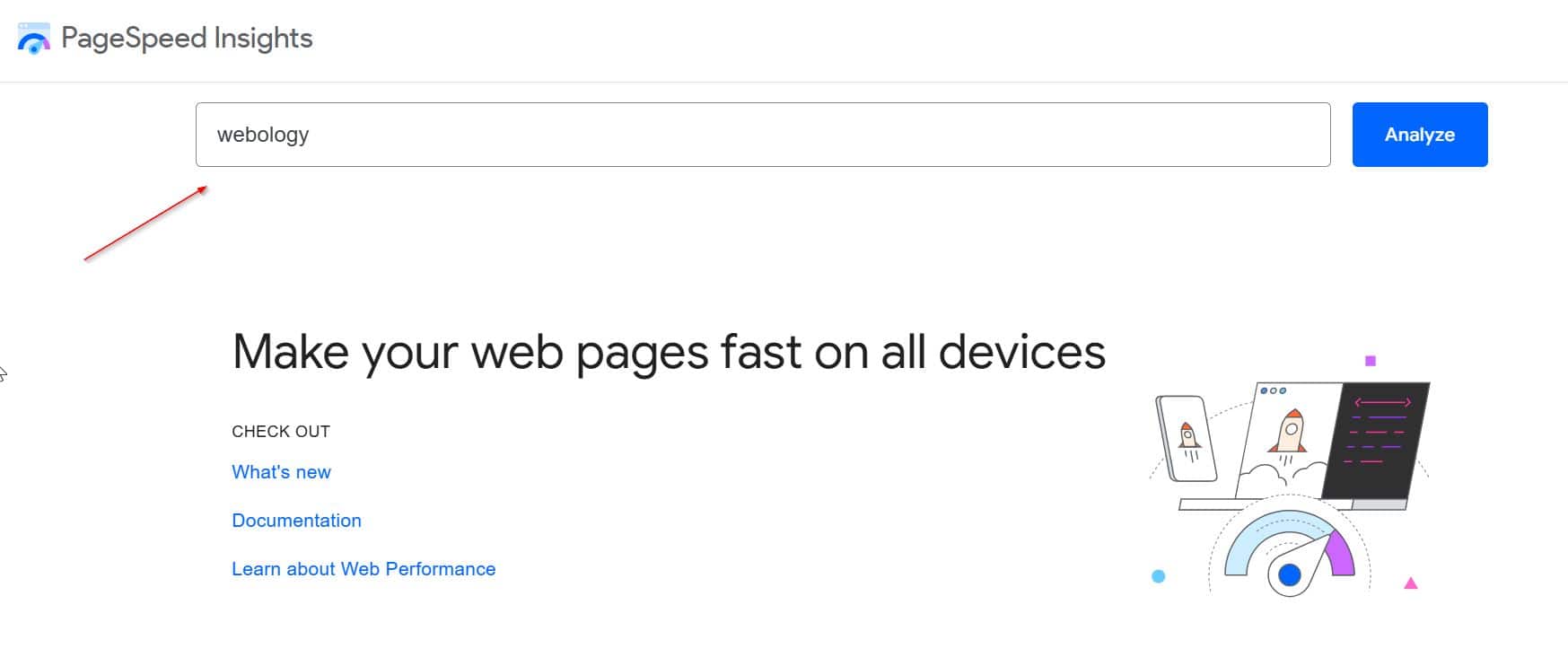
You’ll get a detailed report on the factors affecting your site’s speed. Understanding this report and knowing what to do about it can be tricky and time-consuming, so you’re better off hiring a specialist for it.
Alternatively, you can use a paid SEO plugin such as WPRocket to optimize your pages for speed.
Here are the factors you need to be aware of whether you’re hiring someone or going the DIY route:
Unoptimized Images and Website Code
Large-sized images and unoptimized code put a load on your website’s server. Compress your images without losing their visual quality and optimize your code with a WordPress plugin.
Server Performance (Quality of Hosting Service)
The quality of your web hosting service plays a role in your site’s loading speed as it decides the server’s performance. Plus, shared hosting plans often perform slowly as multiple websites share the same server.
Lack of Caching
Caching eliminates the need to reload your website for repeat visitors. You can either implement server-side caching or use browser caching. Keep in mind that this only makes your site load quickly for people who’ve already visited your site once.
Too Many HTTP Requests
Every HTTP request adds to the time your website takes to load in front of a visitor. You want to minimize these requests by:
- Using Gzip compression
- Removing unused plugins
- Minimizing redirects
- Merge CSS and JAVASCRIPT files

No Content Delivery Network (CDN)
The distance between your main server and the visitor impacts loading time. The further someone is from your server, the more they’ll have to wait. Unless you use a content delivery network like Cloudflare. CDNs save your website’s data in multiple locations worldwide, reducing the distance and serving your website faster.
Heavy Use of Plugins
Too many WordPress plugins can be bad for your website’s speed. Stick to the important ones, such as a speed optimization plugin and a security plugin.
Mobile Optimization
If your website’s mobile version isn’t optimized for the small screen audience, you’re risking its potential to rank on Google. More than half of the world’s population uses smartphones to visit websites, making mobile optimization a crucial SEO and user experience factor.
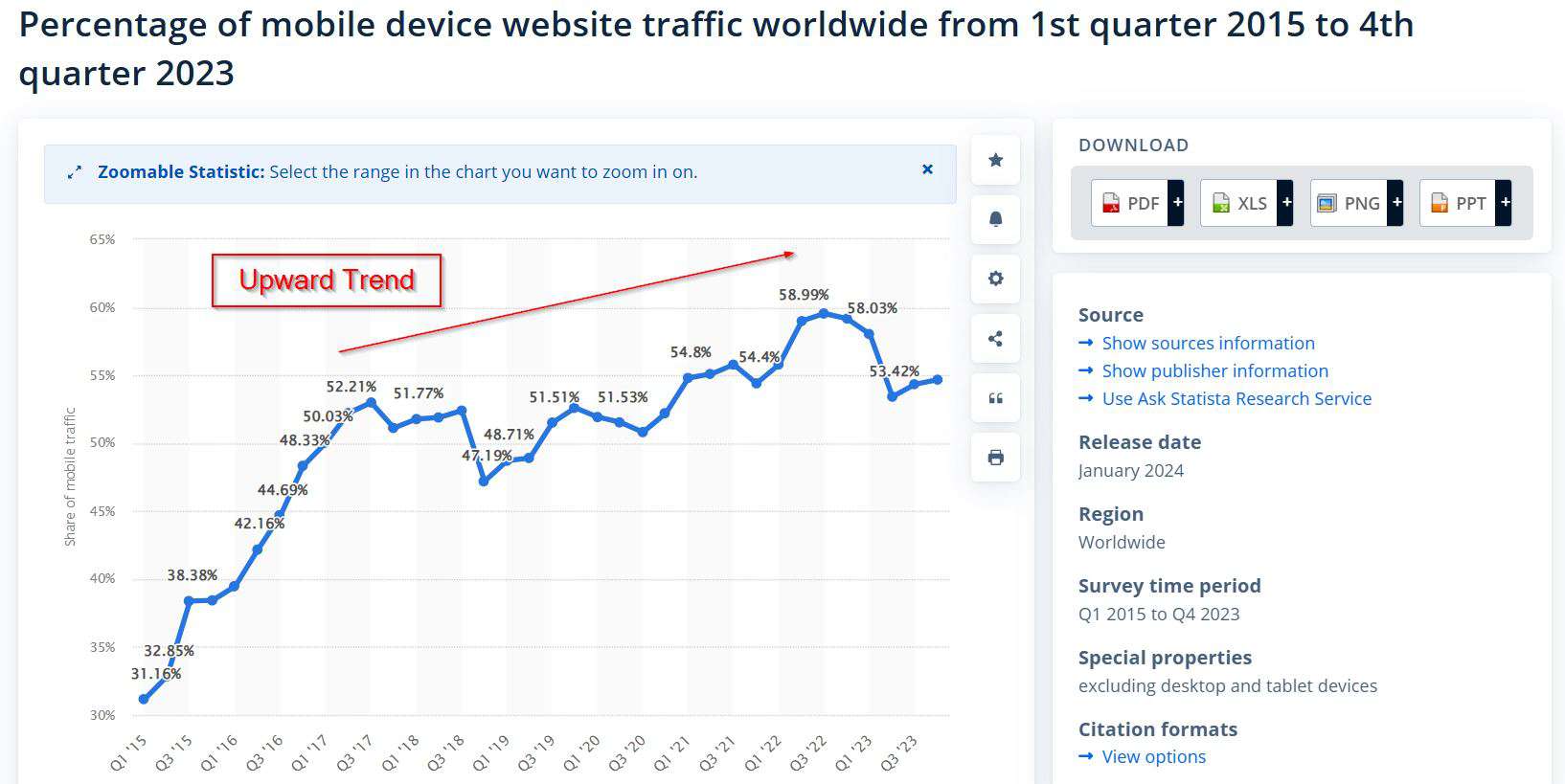
The good thing is if you’re using an SEO-friendly WordPress theme and plugins, most of your work is taken care of. However, if you’re designing your web pages with a drag-and-drop page builder, make sure the mobile versions look good too.
You May Also Like: How Hospitals Can Market Their Services with Google Ads
Local SEO
A major part of hospital SEO is ranking on Google’s local search results. These are the top three businesses, also known as Google Map Pack, that rank at the top for a local intent search query like “Best hospitals in Chicago”.
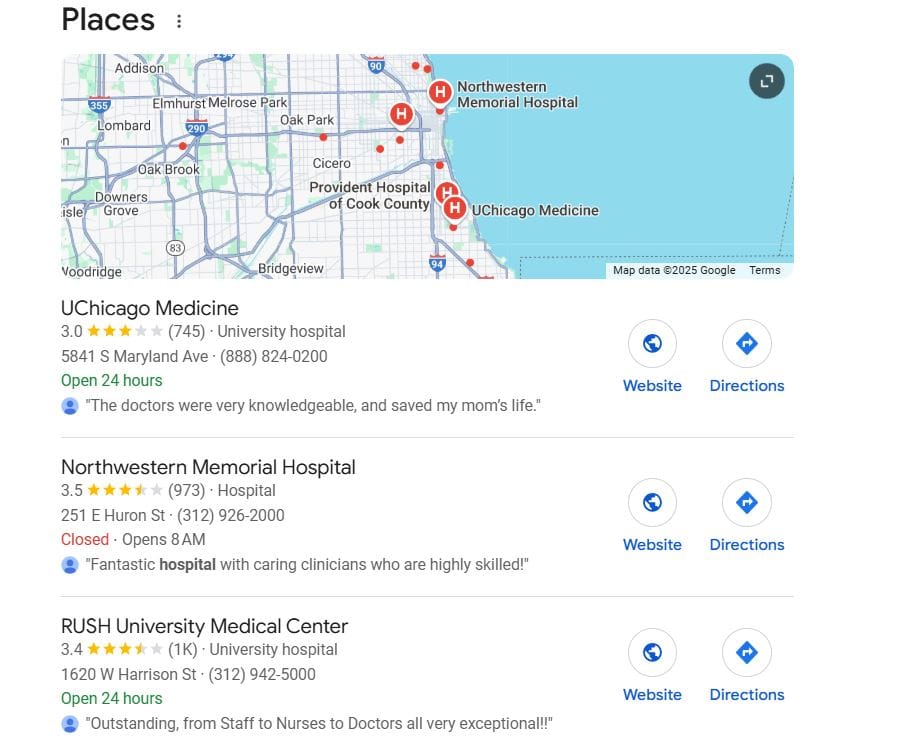
Having an optimized Google Business Profile (GBP) helps you rank in one of the three positions, maximizing your chances of generating leads organically.
Steps to Optimize Google Business Profile for Better Local Search Visibility
- Claim and Verify Your Business Profile
- Ensure Complete and Accurate Business Information
- Choose the Right Primary and Additional Categories
- Write a Compelling Business Description with Keywords
- Add High-Quality and Relevant Photos/Videos
- Encourage and Respond to Customer Reviews
- Maintain Consistency Across Online Listings
- Utilize Google Posts for Updates and Promotions
- Set Up a Q&A Section and Provide Answers
- Monitor Google My Business Insights for Performance
- Incorporate Local Keywords in Your GBP
- Regularly Update Business Hours and Special Hours
- Add Secondary Business Attributes (e.g., “Women-owned”)
- Utilize Short Name and Profile URL Features
- Implement Booking Links if Applicable
- Use the Messaging Feature for Direct Customer Communication
- Include NAP (Name, Address, Phone Number) on Your Website
- Optimize for Mobile User Experience
- Leverage Schema Markup for Local SEO
- Connect Your GBP to Google Ads if Using Paid Promotions
In addition to GBP optimization, your website’s homepage, service pages, and blog posts play an important part in your local rankings. Keep all your business information consistent throughout and use blog posts and GBP posts to build authority in your space.

Content Strategy
SEO blog posts are a perfect way to attract high-intent leads to your marketing funnel. The key is to identify the questions people are asking on Google and address them with helpful blog posts. Use tools like Answer The Public to find these questions and Rank Math to optimize your content for search engines.
SEO Optimized Content Checklist for Your Hospital’s Blog
- Conduct thorough keyword research to identify relevant medical terms and patient concerns.
- Ensure the primary keyword is included in the title, headers, and throughout the content naturally.
- Use meta titles and descriptions with targeted keywords and compelling calls-to-action.
- Incorporate internal links to other relevant blog posts and hospital service pages.
- Include external links to reputable medical sources to enhance credibility.
- Optimize images with alt tags, titles, and ensure they are compressed for fast loading speeds.
- Make sure the content is original, reads naturally, and is written in a patient-friendly language.
- Utilize structured data markup for enhanced search visibility and rich snippets.
- Ensure content is mobile-friendly and responsive across all devices.
- Check for proper content length, aiming for a balance between comprehensive and concise.
- Regularly update content to maintain relevance with current medical guidelines and information.
- Proofread for grammatical and spelling errors to maintain professionalism.
- Review page load speed and optimize any elements causing delays.
- Add social sharing buttons to improve content reach and engagement.
- Monitor analytics to track performance and adjust strategies as needed.
Structured Data (Schema Markup)
Structured data implementation serves to provide important data about your hospital to search engines. The MedicalOrganization and LocalBusiness schemas would be the most important ones to implement. Depending on your specific services, you can use more schemas to provide more context to search engines, such as MedicalProcedure and Physician Schema.
Thanks to platforms like Google Structured Data Markup Helper, you can implement different schemas on your site without much technical knowledge. Or, you can hire a professional at Webology to take care of it for you.
Link-building (Off-Page SEO)
Off-page SEO and link-building are often used interchangeably. Link-building is essentially an SEO strategy to attract links to a website, whereas off-page SEO includes everything you do outside your site to boost its SEO standings.
Links from external, high-authority sources increase your website’s credibility in the eyes of Google. As a result, you have a better chance of ranking high for target keywords.
But, you need to be careful while building links as too many of them can be bad for your site’s reputation. Plus, not all backlinks are made equal; some can even work against you.
Let us make link-building easier and more effective for you. Here are some powerful and safe strategies for your hospital website:
Build Business Directory Backlinks
Business directories can help you establish your hospital’s NAP (Name, Address, Phone Number) consistency. These links may not have a lot of value, but they can certainly help with your business’s visibility, trust, and authority.
Partner with Local Businesses
You can partner with other businesses in your area that aren’t your direct competitors. For instance, create a win-win deal with pharmacies where you can recommend their services and get a backlink to your site in exchange. Similarly, host free workshops in schools and daycare centers to get featured on their websites.
Reputation Management
Reputation is a critical factor people consider before trusting a service-based business, especially in hospitals where the stakes are high. Probably the most important reputation asset to take care of is your Google reviews page. More positive Google reviews can help you rank higher for local search queries.
Start by offering top-notch healthcare services. Appreciate customer reviews even if they’re not what you’d expect. Address negative feedback professionally and as soon as possible. Lastly, keep track of your brand’s reputation by setting up Google Trends for the most important keywords, such as “Your brand name + review”.

Analytics and Monitoring
Even if you think you’ve implemented the best SEO strategy possible for your hospital services, there’s always room for improvement. Tracking your SEO performance, such as traffic fluctuations and click-through rates, helps you work on the right strategies and avoid the wrong ones. More importantly, you should be willing to make the necessary tweaks to your strategy as you move forward.
However, it can be tricky for a service provider to manage everything from tracking keywords to making sure your website isn’t getting spammy backlinks. This is where Webolog’s all-in-one SEO service comes in.
If you want a team of SEO experts to create, implement, track, and tweak your SEO strategy, get in touch.
Conclusion
Want to increase your hospital’s revenue and market share with SEO? Follow the steps outlined in this guide. Start by creating a strategy tailored to your specific goals. As a location-based hospital service, you want to focus on local intent keywords such as “Best 24/7 hospitals in [City name].
On-page SEO and off-page SEO can only work if you work on the right search queries. Remember, SEO doesn’t have a universal template a business can follow and generate long-term results. It’s also not about setting and forgetting. Track your SEO campaigns and be willing to make the necessary changes to ensure consistent growth.
Frequently Asked Questions 
Q: How can hospitals improve their market share in today’s competitive healthcare landscape?
A: Hospitals can enhance their market share by embracing effective digital marketing strategies, notably by improving their SEO. By optimizing their online presence, they make it easier for potential patients to find and trust their services, ultimately increasing patient engagement and interactions.
Q: Why is SEO particularly important for hospitals?
A: SEO is crucial as it ensures that healthcare websites rank higher in search results, making hospitals more visible and accessible to potential patients. This visibility not only boosts patient engagement but also fosters trust and positions the hospital as a leader in healthcare services.
Q: What are some effective digital techniques hospitals can use to improve their SEO?
A: Effective digital techniques include optimizing healthcare websites for search engines, enhancing local SEO to improve visibility, ensuring mobile responsiveness, and integrating relevant keywords into site content. These methods ensure that hospitals connect efficiently with their target audience.
Q: How does local SEO benefit hospitals?
A: Local SEO helps hospitals become the first choice for potential patients searching for medical services nearby. By leveraging local keywords and encouraging patient reviews, hospitals can boost their credibility and expand their local presence, making them more attractive to users searching for nearby medical resources.
Q: Why is content creation important for healthcare SEO strategies?
A: Content creation is pivotal as it enhances search engine visibility. By developing content that informs and engages, hospitals can resonate with their target audience, fostering trust and establishing their reputation as a leading healthcare provider. Regularly updated, well-crafted content helps maintain high search engine rankings and can effectively capture and sustain patient interest.
